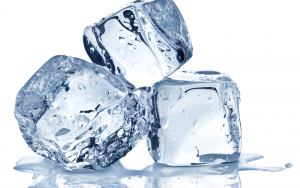Maurice de Koning
Institute of Physics Gleb Wataghin and Center for Computing in Engineering & Sciences
University of Campinas
Water is the single-most important substance of Earth. Not only is it vital to life, it is also key in many other fields of knowledge, including climate science, chemistry, physics and engineering. The mechanical properties of water in its solid form, i.e. ice, play an important role in a wide variety of phenomena that take place on vastly different time and length scales. On the one hand, the flow of glaciers and ice sheets, which are directly involved in the slow dynamics of Earth’s global climate system, occur on scales of years and kilometers, respectively. On the other, the high-velocity impact of pieces of ice with ice-breaker ships, bridge pillars, and aircraft parts, and which affect the integrity of such man-made engineering structures, involve processes that occur on time and length scales of seconds and meters.

The mechanical properties of ice depend on subtle interactions of its water molecules
Because of the importance of the mechanical behavior of ice under different circumstances, significant effort has been directed toward understanding the deformation behavior of ice in terms of unit processes taking place on the molecular scale. Given the difficulty to directly observe such processes in a real-life laboratory experiment, much of the investigation is carried out using molecular-level computer simulation methods, which provide a “computational microscopy” tool that allows inspecting processes on a microscopic, molecular level. The fidelity of such simulations depends critically on the description of the interactions between water molecules and the development of such models has been an active field of research over the past 50 years, leading to more than 100 different interaction models.
However, in their development, virtually all attention has been directed to improving the description of water interactions in the liquid phase, with the mechanical properties of ice remaining mostly under the radar. As a result, the response to mechanical deformations as described by this very large set of water models is essentially unknown, hampering their applicability to the study of the mechanics of ice on a molecular scale.
In two recent studies, the group led by Prof. Maurice de Koning, Research Associate at the CCES, investigated the fundamental mechanical response of ice as described by a set of frequently-used water models. Each of these focused on one of the two fundamental types of mechanical behavior, namely elastic and plastic. Elastic deformation is an essentially reversible process, meaning that once an external load is removed the system returns to its initial, undeformed state. Plastic deformation, on the other hand, is irreversible, involving the creation of permanent deformation that remains even after the external forces acting on the solid have been removed.
In the study considering the elastic properties of ice it was found that the protons in the water molecule play a key role in what is known as the anisotropy of the elasticity in ice. Ice is elastically anisotropic, which means that depending of the direction in which an ice sample is loaded, the magnitude of the elastic response is different. Comparing a set of models in which the protons are taken into account explicitly with a recent model in which they have been “coarse-grained out” to reduce computational cost, reveals that the latter grossly underestimates this anisotropy. While explicit-proton models do not give quantitatively accurate results as compared to experimental values, they do capture the correct qualitative behavior as far as the anisotropy is concerned. This indicates the importance of the use of explicit-proton models in the description of ice elasticity.
On the same note, the second study investigated the role of protons in the plastic deformation of ice. From our daily experience we know that ice is a brittle material when deformed rapidly, an example being an ice cube that shatters into pieces when dropped on the floor. Investigating water models from the same set as that considered in the work on the elastic constants, it was found that the model that eliminated the explicit protons from the description behaves very differently, displaying easy deformation without fracturing. On the other hand, the considered model with explicit protons, gives the correct brittle behavior, displaying catastrophic fracture when the applied loads become larger than a certain threshold.
Both studies clearly show the importance of the protons in the water molecules in the description of the fundamental mechanical behavior of ice and indicate that eliminating them to obtain a computationally less expensive representation leads to fundamentally incorrect mechanical response.
Associated scientific papers:
P.A. Santos Flórez, C. J. Ruestes and M. de Koning, Uniaxial-deformation behavior of ice Ih as described by the TIP4P/Ice and mW water models, J. Chem. Phys. 149, 164711 (2018).
P. A. F. Pinheiro Moreira, R. Gomes de Aguiar Veiga and M. de Koning, Elastic constants of ice Ih as described by semi-empirical water models, J. Chem. Phys. 150, 044503 (2019).

